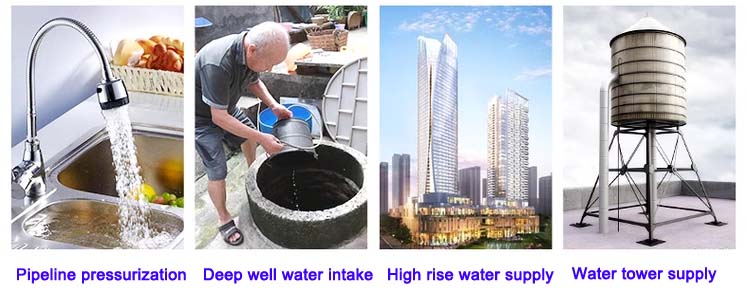English
- Afrikaans
- Albanian
- Amharic
- Arabic
- Armenian
- Azerbaijani
- Basque
- Belarusian
- Bengali
- Bosnian
- Bulgarian
- Catalan
- Cebuano
- Corsican
- Croatian
- Czech
- Danish
- Dutch
- English
- Esperanto
- Estonian
- Finnish
- French
- Frisian
- Galician
- Georgian
- German
- Greek
- Gujarati
- Haitian Creole
- hausa
- hawaiian
- Hebrew
- Hindi
- Miao
- Hungarian
- Icelandic
- igbo
- Indonesian
- irish
- Italian
- Japanese
- Javanese
- Kannada
- kazakh
- Khmer
- Rwandese
- Korean
- Kurdish
- Kyrgyz
- Lao
- Latin
- Latvian
- Lithuanian
- Luxembourgish
- Macedonian
- Malgashi
- Malay
- Malayalam
- Maltese
- Maori
- Marathi
- Mongolian
- Myanmar
- Nepali
- Norwegian
- Norwegian
- Occitan
- Pashto
- Persian
- Polish
- Portuguese
- Punjabi
- Romanian
- Russian
- Samoan
- Scottish Gaelic
- Serbian
- Sesotho
- Shona
- Sindhi
- Sinhala
- Slovak
- Slovenian
- Somali
- Spanish
- Sundanese
- Swahili
- Swedish
- Tagalog
- Tajik
- Tamil
- Tatar
- Telugu
- Thai
- Turkish
- Turkmen
- Ukrainian
- Urdu
- Uighur
- Uzbek
- Vietnamese
- Welsh
- Bantu
- Yiddish
- Yoruba
- Zulu
Telephone: +86 13120555503
Email: frank@cypump.com
Sep . 30, 2024 03:21 Back to list
Engine-Driven Slurry Pumps for Sale Explore Our Available Options Today
Engine-Driven Slurry Pump Available for Purchase A Comprehensive Overview
In industries that involve the transportation of heavy materials, such as mining, construction, and wastewater management, slurry pumps play a vital role. Among various types of pumps, engine-driven slurry pumps have emerged as an essential solution due to their robustness and efficiency. This article explores the features, advantages, and considerations when purchasing an engine-driven slurry pump.
What is an Engine-Driven Slurry Pump?
An engine-driven slurry pump is a mechanical device specifically designed to transfer liquid containing solid particles. The pump is powered by an engine, which could be diesel or gasoline, providing it with the necessary energy to handle thick, viscous mixtures. Typical applications include transporting slurries in mining operations, handling sludge in wastewater treatment facilities, and shifting sediments in construction projects.
Key Features
1. High Solids Handling Capability Engine-driven slurry pumps are built to manage slurries with a high concentration of solids, including gravel, sand, and other particulates. This feature is essential in environments where traditional pumps may struggle or fail.
2. Durable Construction These pumps are constructed with materials designed to withstand abrasiveness and corrosion, often made from high-chrome iron or rubber lining. This durability enhances the pump's lifespan and reduces maintenance costs.
3. Self-Priming Capability Many engine-driven slurry pumps are self-priming, meaning they can create the suction needed to draw the slurry into the pump without manual assistance. This feature is particularly beneficial in remote locations.
4. Versatility Available in various sizes and designs, these pumps can be customized to meet specific operational needs, allowing for applications in diverse industries.
5. Mobility Since they are powered by engines, these pumps can be easily transported to different job sites, eliminating the need for fixed installations.
Advantages of Engine-Driven Slurry Pumps
1. Independence from Electrical Power One significant advantage is their ability to operate in places without access to electrical power. This independence makes them ideal for remote or off-grid workspaces.
'engine-driven slurry pump available for purchase at ...'

2. Robust Performance Engine-driven pumps typically provide higher performance in demanding conditions, ensuring consistent operation even in extreme environments.
3. Cost-Effectiveness While the initial investment may be higher than electric alternatives, the durability and reduced maintenance requirements of engine-driven pumps can lead to lower long-term costs.
4. Ease of Operation With user-friendly designs, these pumps can be operated by personnel with minimal training, facilitating quick deployment in various scenarios.
Considerations When Purchasing
When considering the purchase of an engine-driven slurry pump, several factors should be taken into account
1. Pump Specifications Evaluate the specifications such as flow rate, maximum head, and solids handling capacity to ensure the pump meets your operational requirements.
2. Fuel Efficiency Look for models that offer greater fuel efficiency to minimize operational costs, especially in large-scale operations.
3. Maintenance Requirements Choose pumps with accessible parts and low maintenance needs to reduce downtime and expenses.
4. Warranty and Support Opt for manufacturers that provide solid warranties and customer support to address any potential issues quickly.
5. Reviews and Recommendations Research user reviews and seek recommendations from industry professionals to identify reliable models and manufacturers.
Conclusion
Engine-driven slurry pumps are vital tools in various industrial applications, providing unmatched performance in transporting slurries. Their independence from electrical power, combined with their robustness and flexibility, make them a preferred choice for professionals in diverse fields. When investing in an engine-driven slurry pump, careful consideration of specifications, efficiency, maintenance, and manufacturer support can ensure you select the best option for your needs. By making informed choices, you can optimize your operations, reduce downtime, and enhance productivity in your projects. As the market for these pumps continues to evolve, staying updated on the latest technologies and innovations will be key to maintaining an edge in your industry.
-
ISG Series Vertical Pipeline Pump - Chi Yuan Pumps Co., LTD.|High Efficiency, Energy Conservation, Low Noise
NewsJul.29,2025
-
ISG Series Vertical Pipeline Pump-Chi Yuan Pumps Co., LTD.|High Efficiency&Energy-Saving
NewsJul.29,2025
-
ISG Series Vertical Pipeline Pump - Chi Yuan Pumps Co., LTD. | High Efficiency, Energy-Saving
NewsJul.29,2025
-
ISG Series Pipeline Pump - Chi Yuan Pumps | High Efficiency, Low Noise
NewsJul.29,2025
-
High-Efficiency Vertical Slurry Pumps for Mining & Industry Solutions
NewsJul.29,2025
-
High-Efficiency Pipeline Pump Solutions for Every Pipeline Pump Station
NewsJul.29,2025










